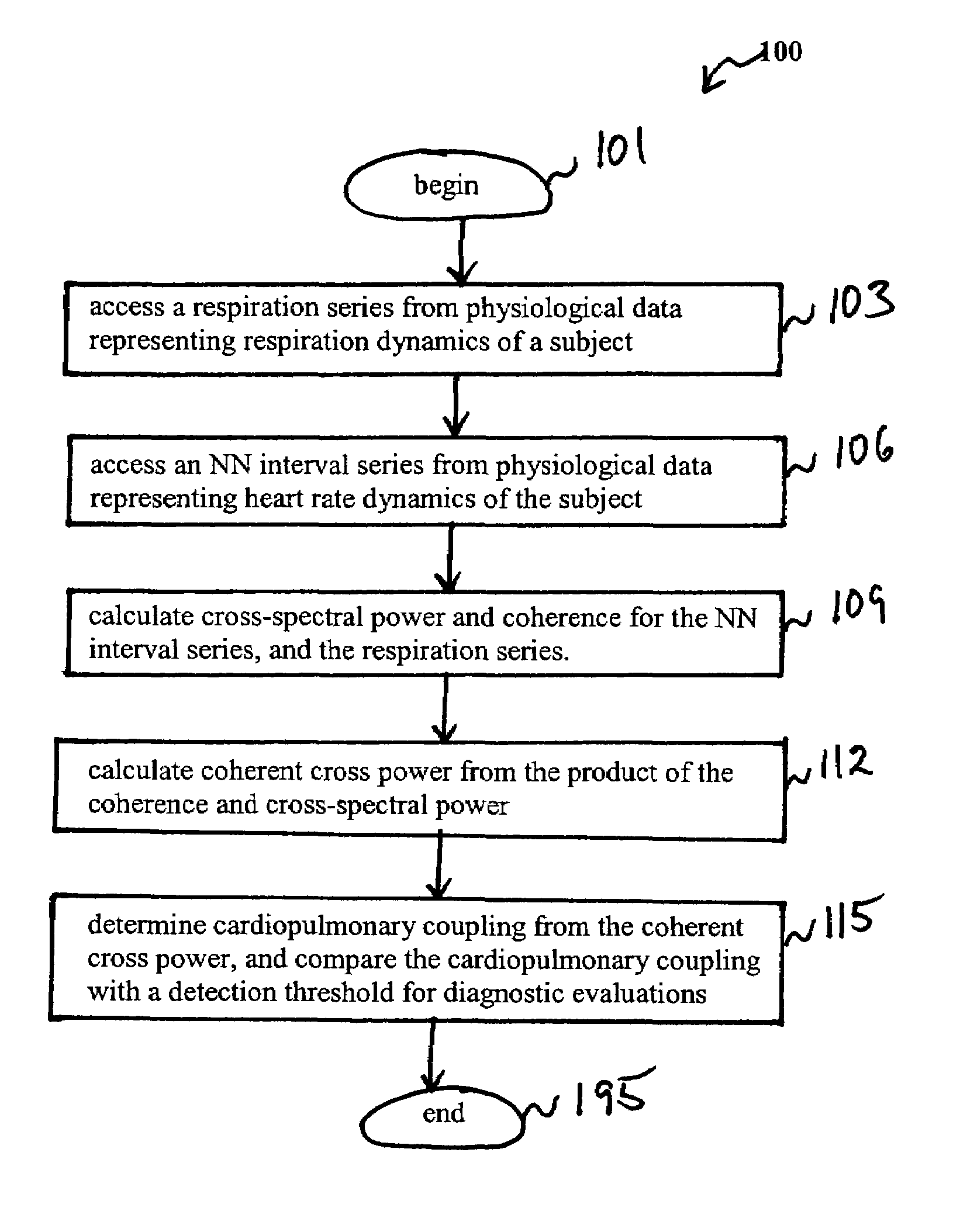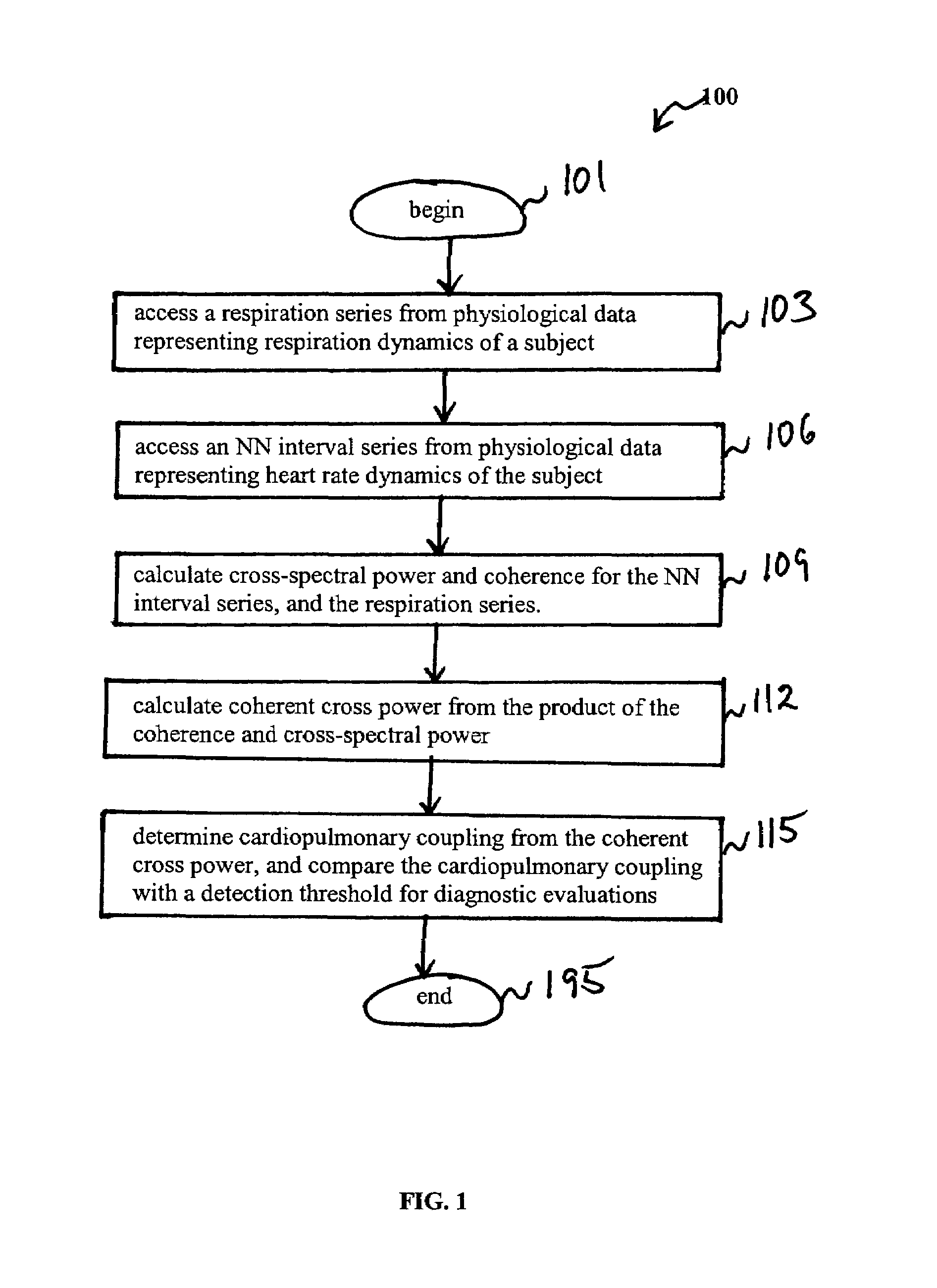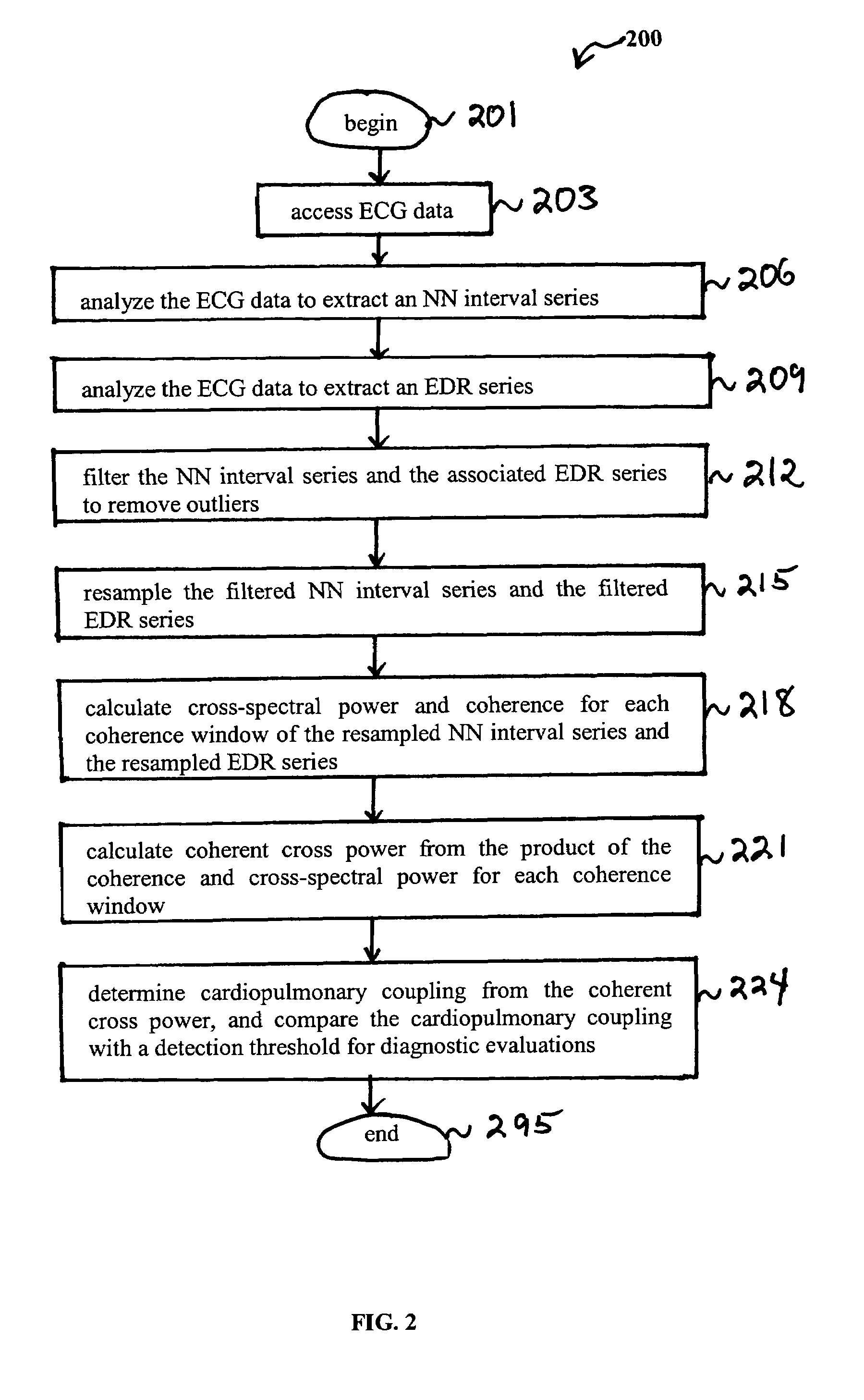Assessment of sleep quality and sleep disordered breathing based on cardiopulmonary coupling
a cardiopulmonary coupling and sleep quality technology, applied in the field of physiologic data analysis, can solve the problems of significant patient discomfort, substantial expense and patient discomfort, and the dependence on tedious manual scoring of “events” based on physiologically arbitrary, and achieve significant variance in effect. the effect of the
- Summary
- Abstract
- Description
- Claims
- Application Information
AI Technical Summary
Benefits of technology
Problems solved by technology
Method used
Image
Examples
Embodiment Construction
[0026]According to embodiments of the present invention, a method, system, and computer program product is provided to perform a quantitative analysis of cardiopulmonary coupling between two physiological signals to detect and evaluate sleep physiology.
[0027]Sleep is a complex state characterized by cycling stages (i.e., rapid eye movement (REM) sleep and non-REM sleep) and a sequence of progressive and regressive depths (i.e., stages I to IV in non-REM sleep). There is also a stability dimension that has been recognized, but not generally applied in clinical practice, based on the concept of cyclic alternating pattern (CAP) in non-REM sleep. CAP-type non-REM sleep is unstable, whereas, non-CAP non-REM sleep is a restful, non-aroused state with a stabilizing influence.
[0028]The distribution of stages and states of sleep can be altered by numerous sleep disrupting extrinsic factors (e.g., noise, heat, cold, vibration, barotraumas, motion, gravitational stress, etc.) and intrinsic fac...
PUM
 Login to View More
Login to View More Abstract
Description
Claims
Application Information
 Login to View More
Login to View More - R&D
- Intellectual Property
- Life Sciences
- Materials
- Tech Scout
- Unparalleled Data Quality
- Higher Quality Content
- 60% Fewer Hallucinations
Browse by: Latest US Patents, China's latest patents, Technical Efficacy Thesaurus, Application Domain, Technology Topic, Popular Technical Reports.
© 2025 PatSnap. All rights reserved.Legal|Privacy policy|Modern Slavery Act Transparency Statement|Sitemap|About US| Contact US: help@patsnap.com



